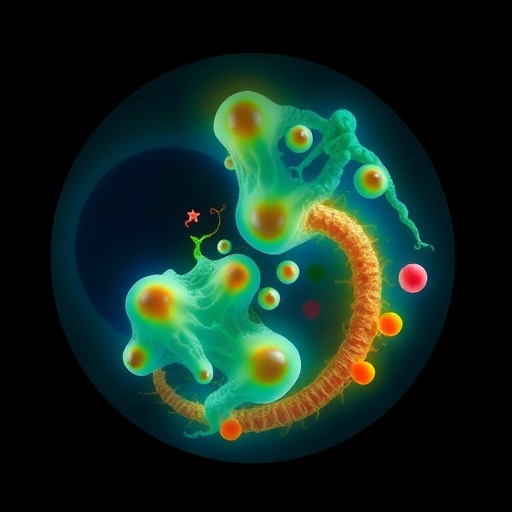What really causes intracerebral haemorrhage

Credit: Insel Gruppe
Cardiovascular diseases are usually complex and affect multiple organs simultaneously. Treatments for vascular diseases in the brain may therefore have implications for the treatment of cardiac diseases. It is therefore important to understand the respective causes and effects. This study explores the causes of intracerebral haemorrhages and links them to the risk of stroke associated with atrial fibrillation. It suggests a fundamental new assessment of the effects of blood thinning on intracerebral haemorrhages.
About 1,000 patients with intracerebral haemorrhage are treated at stroke units each year in Switzerland. Intracerebral haemorrhages are more often fatal than other forms of strokes, and their incidence has not decreased in the past 30 years. The use of blood thinners was previously considered not only to be a risk factor but potential cause for a intracerebral haemorrhage.
Anticoagulation should not be regarded as primary cause
This publication includes the results of two studies conducted by the team of Prof. Werring. It contrasts the role of blood thinning with that of cerebral small vessel disease (SVD) in intracerebral haemorrhages. A moderate to severe cerebral SVD is shown to be closely associated with the occurrence of cerebral haemorrhages. Dr David Seiffge summarized the results as follows: “Our results show that SVD is a precondition for intracerebral haemorrhages under anticoagulation. The degree of SVD in the brain may be used to predict intracerebral haemorrhages. Without SVD the occurrence of intracerebral haemorrhage is close to zero. Consequently, anticoagulation should no longer be considered a cause of intracerebral haemorrhages.”
Why is this important? Protection against stroke for patients with atrial fibrillation
Blood thinning offers important protection against ischemic stroke in patients with atrial fibrillation. Anticoagulation reduces the risk of ischemic stroke in these cases by two-thirds. In the past, anticoagulation has been discontinued immediately in the event of an intracerebral haemorrhage and patients were left unprotected against the risk of a stroke. The new study results now point to a new path: according to the findings, intracerebral haemorrhages can be prevented etiologically by treating cerebral SVD and protection against stroke can be maintained through an adapted continuation of blood thinning. The exact timing and gradation of the two therapies are the subject of further studies.
A challenging methodological approach: combining two multicentre studies
The publication comprises data originating from two independent studies supervised by Prof. David Werring, UCL.The publication is based on two independent, multicentre observational studies. First, a cross-sectional study was carried out with 1,030 patients with intracerebral haemorrhages. CT and MRI were used to look for markers of SVD in the brain. 1,447 patients with atrial fibrillation and cerebral circulatory disorders were enrolled in a second, prospective study. In this group, the incidence of cerebral haemorrhages and ischaemic stroke was considered in relation to blood thinning.
Using this approach, it was possible to show that SVD is a prerequisite for intracerebral haemorrhage. Patients without such a condition did not have a single brain haemorrhage within the first 2 years in the study, despite being treated with a blood thinner. In contrast, at 1.56% per year, the risk was significantly increased for moderate to severe SVD.
A new way of looking at the situation is needed
The study results suggest that blood thinning alone can no longer be considered a cause of intracerebral haemorrhages. Prof. Marcel Arnold points out: «As a new approach, microangiopathies should be systematically searched for and treated in a targeted manner in order to prevent intracerebral haemorrhages. Suitable specialist outpatient clinics are now available. This would reduce the risk of intracerebral haemorrhages.»
A large, international randomised trial (ENRICH-AF), coordinated in Switzerland by David Seiffge, is currently underway with the aim of aligning anticoagulation and microangiopathy therapies with each other.
###
Media Contact
Marcel Wyler
[email protected]
Original Source
http://www.
Related Journal Article
http://dx.





